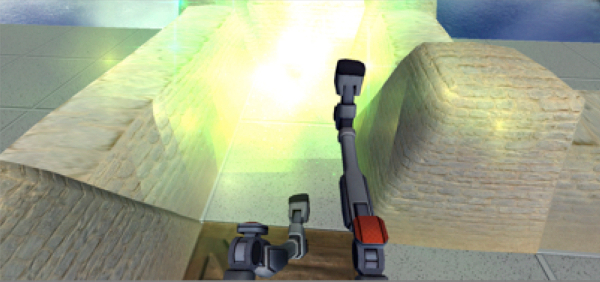Loss of limb is a common problem: almost 2 million people in the U.S. have had an amputation. The great majority of those people experience a persistent sensation of the missing limb, known as a “phantom limb”, associated with persistent and debilitating pain. Current therapies fall short of bringing relief to most individuals with phantom limb pain (PLP).
Most theories of PLP propose that the commands sent from the brain to the amputated limb fail to generate the sensory feedback signals that the brain expects. The mismatch between the expected and actual sensory feedback causes pain. Based on this theory, Laurel Buxbaum, PsyD, associate director of Moss Rehabilitation Research Institute, and colleagues at the University of Pennsylvania – H. Branch Coslett, MD, Katherine Kuchenbecker, PhD, and Alex Miller – have developed a new virtual reality approach to the treatment of lower limb PLP that seeks to improve the match between expected and actual feedback.
Individuals with lower limb amputations wear a head-mounted display that provides a three-dimensional graphical view of a virtual environment.
When the user moves and rotates his or her head, the view changes appropriately. Patients engage in a number of game-like tasks that require movement of both legs, such as ‘scooting’ around a maze on a virtual chair or rappelling up a cliff by holding a virtual rope and pushing off with the legs.
Custom software and a motion tracking system generate an image of a moving figure with two complete legs.
Pilot research conducted thus far with a small number of research subjects is promising. The system is easy to use, and appears to improve PLP. The project collaborators are currently seeking funding to enable them to test the VR system with a larger group of research participants.

